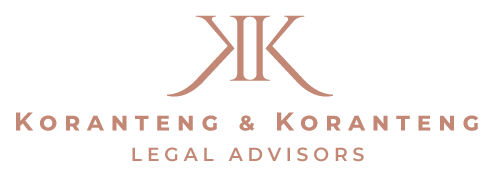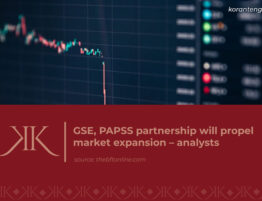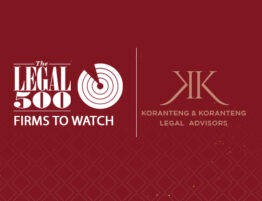
Drones – a game-changing technology and its regulations

An interesting phenomenon is occurring in modern warfare. Drones have become a pervasive feature in the war against Ukraine. The media has dubbed the war a “remote-control war”. Both Russians and Ukrainians have resorted to using drones to track the enemy and drop grenades. Hitherto, weapons such as Multiple Launch Rocket Systems (MLRS) dominated the battlefield. Drones have proven to be advantageous to Russian and Ukrainian troops on the front line.
These troops use them for battlefield reconnaissance and to attack enemy targets. Drones are adaptable and can be easily improvised for use as weapons. The same models used by photography enthusiasts and for drone racing can be used in a war for intelligence purposes. Though some drones are small in weight and weigh less than 500g, they can carry explosive weapons such as a kilo of grenades.
This technology has remarkably become a subject of diplomatic, military and economic policy wranglings. The United States of America has put in measures such as export controls to curtail the sale of advanced semiconductor chips used in military appliances like drones. Interestingly, The United States has blacklisted DJI, a Chinese company which is the largest manufacturer of drones.
Countries currently aligned to Russia or Ukraine are supplying the two countries with military drones. Russia regularly uses Iranian Shahed-136 drones to attack Ukrainian cities. Ukraine on the other hand has received drones such as the Norwegian Black Hornet reconnaissance drone and the Turkish missile-equipped Bayraktar TB2. A technology used for both civilian and military purposes is turning out to be a game changer in the war. This technology allows countries with less military capabilities to stretch limited forces.
What are Drones?
Drones are essentially unmanned aircrafts or remotely piloted aircraft systems. In effect, they are unmanned flying objects either controlled remotely or operating completely autonomously. In addition to its software, autonomous drones utilize other advanced technologies such as artificial intelligence, cloud computing, computer vision, deep learning, machine learning and thermal sensors to enable them carry out missions without human interventions.
Drones are also known as Unmanned Aerial Vehicles (UAVs), Unmanned Aircraft Systems (UAS), Small Unmanned Aerial System (SUAS) or Remotely Piloted Aircraft Systems (RPAS). These terms are sometimes used interchangeably. For the purpose of this article, drones, UAVs or RPAS will be used interchangeably and refer to the same thing.
History
Drones were originally developed in the 20th century for military purposes and used in military missions which were deemed “too dangerous” or risky for humans. As technology advanced and drones became more affordable, it became available for other civilian purposes.
The first recorded basic concept of drones being used for military purposes was in 1849. The Austrian Navy attacked the city of Venice during a siege using 200 bomb-laden balloons. Fortunately, only one bomb found its mark, changing winds diverted the course of most balloons. The first pilotless vehicles were developed in Britain and the USA during the First World War.
During the Vietnam war, reconnaissance UAVs were deployed on a large scale. Around that time the range of usage for UAVs expanded, they were used to launch missiles against fixed targets, and for psychological operations such as dropping of leaflets. In the Yom Kippur War of 1973, Israel used drones as decoys in combat.
In the 1990s, American and Israeli companies developed more advanced drone technology which were more cost efficient. After the devastation caused by Hurricane Katrina in 2005, the Federal Aviation Authority of the United States allowed drones to fly in civilian airspace for search and rescue missions. Predator drones with thermal cameras were able to detect the heat signatures of humans from up to 10,000 feet away. Around this time, the commercial drone industry began taking shape. The general public started to have a keen interest in the technology, after Amazon announced it would use drones for delivery in 2013.
Uses
Aside from their well-known military use, drones are used by police departments across the world for law enforcement purposes. They have been used to perform critical search and rescue missions, forest fire detection, border and maritime patrol, and road traffic surveillance. In the energy sector, drones are used for power and pipeline inspections. They serve as a surveying tool in the real estate industry. They are progressively use for climate change monitoring and environmental analysis.
Agricultural and mining companies are increasingly using drone applications in their operations. The technology offers immense benefits to the agricultural industry and is used for pest control, plant health monitoring, aerial spraying, soil analysis etc. In the field of precision agriculture, drones accurately measure and study crop production. Mining companies utilize drone technology in surveying and mapping of mining sites. Drones are excellent tools for precision mining. They can access tighter spaces in complex mine sites and collect accurate geospatial data more efficiently.
Drones are most famously used in Ghana in the entertainment industry for event management, aerial photography and videography. They are also used for product deliveries, a notable case in point being Zipline Ghana; a logistic company with the world’s largest fleet of medical-delivery drones in Ghana. For civilian purposes, many drones utilize a quadcopter configuration.
Drones and regulations in Ghana
There is a growing industry of drones and drone operators in Ghana. This trend is expected to grow further as drones gain more commercial applications. The Ghana Civil Aviation Authority (GCAA) is the mandated government authority in charge of regulating air transportation in Ghana. The GCAA also provides air navigation services within the Accra Flight Information Region (FIR), which comprises the airspace over the Republic of Ghana and a large area over the Atlantic Ocean in the Gulf of Guinea.
The GCAA in addressing the use of drones has issued the Ghana Civil Aviation (Remotely Piloted Aircraft System) Directives, 2018 – Part 28 (“the Directive”), to guide the operations of drones in Ghana’s airspace and at aerodromes. The Ghana Civil Aviation Authority collectively refers to drones in the Directive as Remotely Piloted Aircraft Systems (RPAS).
Classification of RPAS
Drones may be classified according to weight, range or endurance. Such classification helps drone operators know the appropriate laws applicable to their UAVs. The GCAA classifies drones into three (3) broad categories;
- Small RPAS: unmanned aircraft with maximum take-off weight up to 1.5 kilograms. This shall be flown only within the visual line of sight (VLOS) of the pilot.
- Light RPAS: unmanned aircraft with maximum take-off weight of more than 1.5 kilograms but less or equal to 7 Kilograms. This shall be flown only within the visual line of sight of the pilot.
- Large RPAS: all unmanned aircrafts with maximum take-off weight of more than 7 kilograms. This can be flown either within the visual line of sight of the pilot or beyond the visual line of sight (BVLOS) of the pilot.
A picture showing the Visual Line-of-Sight. Source: www.researchgate.net
Important Guidelines for RPAS Operators in Ghana
The Directive provides that RPAS should be operated in a manner so as not to pose safety risks to other aircrafts, persons and properties.
- All RPAS must be registered with the GCAA.
- An operating permit issued by GCAA is required for all groups of RPAS. However, certification will only be required for commercial RPAS operators.
- An operating permit is subject to annual renewal.
- All RPAS flights are limited to a maximum height of 400 feet above ground level. For flights above this level, the approval of the Authority is required.
- No RPAS shall operate within a 10 km radius from an airport or helipad.
- All private and recreational RPAS operations shall be limited to Visual Line-of-Sight operations in daylight unless permitted by the Authority.
- Only one RPA shall be controlled by an RPS (Remotely Piloted Station) at any given time.
- No RPAS shall be operated at night without prior authorisation by the Authority.
- Operators of RPAS are forbidden from flying in restricted, prohibited and danger areas without prior authorisation from GCAA and any other relevant Governmental agencies.
- RPAS shall not be flown within a radius of 30 meters from buildings and vehicles not within an operator’s control or without explicit permission from relevant persons or owners.
- Flying above populous areas, gatherings or other people’s backyards is prohibited, unless approval is granted.
Special authorisation is required when operating drones in the following operations:
- The carriage of goods
- Banner towing
- Cross border operations
- Hazardous operations
- Dropping and discharging of things
- Acrobatics, formation and racing flights
- Operations in the restricted areas of aerodromes
- Operations in areas of high RF transmission/interference (e.g., radar sites, high tension wires)
Applicants requesting for special authorization have to submit the application not less than thirty (30) days before the date of intended operation.
Concerns Surrounding the Usage of Drones
The use of drones raises privacy concerns and data protection issues. Drones combined with advanced surveillance technology may be able to identify and monitor individuals from a distance without their knowledge. Also, a Wi-Fi antenna affixed to a drone can be used to locate individuals through their mobile phones. This contravenes the right to privacy.
The right to privacy is a fundamental human right enshrined under Article 18 of Ghana’s 1992 Constitution. Article 18(2) provides that- “No person shall be subjected to interference with the privacy of his home, property, correspondence or communication except in accordance with law and as may be necessary in a free and democratic society for public safety or the economic well-being of the country, for the protection of the rights or freedoms of others.”
Complaints of drones being used to intrude on people’s privacy abound. The paparazzi is one cause of such complaints. They have resorted to using drones to capture images of celebrities in their backyards or in other private settings. Some paparazzi drones fly as low as 20 feet over celebrities’ homes.
The former governor of California, Jerry Brown, signed law AB 856 in 2015 which expands privacy protections to prevent paparazzi from using drones to photograph public figures on their private property. In addition, this law extends to individuals away from the public eye, safeguarding the airspace above people’s property. This has become a necessity because even non-celebrities have not been left out of “Peeping Tom” drones.
An example is an Australian couple that caught a drone spying on them through the balcony door of their fifth-floor apartment in Sydney. Drone operators must therefore be aware of privacy laws and data privacy risks, to ensure respect for people’s privacy and operation within the confines of the law.
Spying is another security threat issue caused by the use of drones. Governments can use the technology afforded by drones for spying purposes. In February 2023, suspected Chinese spy balloons were shot down over the United States airspace. These were allegedly used for surveillance purposes and for spying on sensitive military sites. There have also been ongoing debates of the ethical use of drones as weapons of warfare which sometimes result in unintended civilian casualties.
The future of Drones
The use of drones is projected to soar in the coming decade. It is expected that almost every sector of the economy will embrace the application of drone technology, especially the agricultural industry. The agricultural drone market is estimated to grow from a US$1.2 billion industry in 2019 to US$4.8 billion in 2024. There has also been tremendous growth in the drone inspection market.
The value of the inspections for confined spaces (e.g., oil and gas, power generation, mining, chemicals, marine vessels, and others) was US$795.12 million in 2019 and is projected to reach US$1,936.32 billion by 2027. As technologies and regulations develop, drone usage may include operations involving carriage of cargo and possibly passengers. In the not-so-distant future, domestic operations will likely expand to trans-border flights.
Conclusion
Clearly, looking at the numerous applications of drone technology in diverse industries, one can predict the further growth and integration of UAVs in everyday lives. In some operations, drones are a cheaper, cost effective and efficient option to use as opposed to manned flights.
An example being the current proliferation of drones in the Russia-Ukraine war and the recent use of the technology by logistic companies. Furthermore, there are low barriers to entry in operating drones. As such, regulations concerning UAVs are bound to evolve as drone technology advances. Legal issues such as the invasion of privacy and data protection are likely to become more topical.








